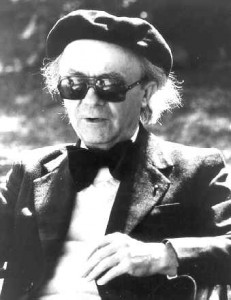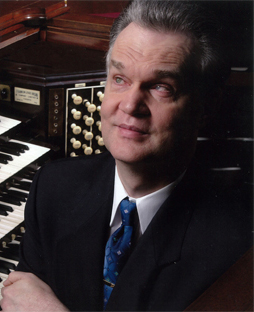 Blind from birth, John Vandertuin began studies in music at the Ontario School for the Blind in Brantford, Ontario. He continued studying with Jean Langlais in Paris and later with Piet Kee at Amsterdam’s Sweelinck Conservatorium. Other organ teachers have included John McIntosh, Larry Cortner, and Robert Glasgow. Active as a composer and recitalist, he has won several competitions as well, including first prize in the Improvisation category of the National Healey Willan Organ Competition (1980) and second prize in the San Anselmo (California) Improvisation Competition (1987, 89). He was invited twice to compete in the International Improvisation Competition in Haarlem, the Netherlands, one of only two Canadians ever to receive this invitation.
Blind from birth, John Vandertuin began studies in music at the Ontario School for the Blind in Brantford, Ontario. He continued studying with Jean Langlais in Paris and later with Piet Kee at Amsterdam’s Sweelinck Conservatorium. Other organ teachers have included John McIntosh, Larry Cortner, and Robert Glasgow. Active as a composer and recitalist, he has won several competitions as well, including first prize in the Improvisation category of the National Healey Willan Organ Competition (1980) and second prize in the San Anselmo (California) Improvisation Competition (1987, 89). He was invited twice to compete in the International Improvisation Competition in Haarlem, the Netherlands, one of only two Canadians ever to receive this invitation.
Audio:
John Vandertuin – Entry in the 33rd Haarlem Improvisation Competition
Tag Archives: Jean Langlais
Jacques Taddei
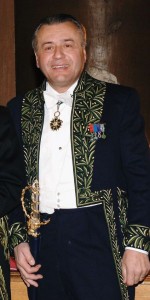 Jacques Taddei (1946-2012) was organist titulaire at the Basilique Sainte-Clotilde from 1993 to 2012. He began as co-titulaire in 1987 and was the successor to Jean Langlais. His successor is Olivier Pénin. He also served as Director of the CNR de Paris (1987-2004), Director of Music for Radio France (2005-2006), and Director of the Musée Marmottan in Paris (2007-2012).
Jacques Taddei (1946-2012) was organist titulaire at the Basilique Sainte-Clotilde from 1993 to 2012. He began as co-titulaire in 1987 and was the successor to Jean Langlais. His successor is Olivier Pénin. He also served as Director of the CNR de Paris (1987-2004), Director of Music for Radio France (2005-2006), and Director of the Musée Marmottan in Paris (2007-2012).
He studied organ with Pierre Cochereau and Marie-Claire Alain. In 1980, he won the Grand Prix d’improvisation in the Concours international d’orgue de Chartres.
Recording:
Hommage a Pierre Cochereau
Includes Liszt “Ad Nos” and an improvised symphony.
A Next Step to Harmony
Last week, we looked at Harmonizing: A Method to Encourage the Art of Improvising by Sietze de Vries. It focused primarily on basic chords in the same key as the melody. Today, I’d like to offer an idea on developing a tonal vocabulary more in the style of Jean Langlais.
Building Chords
Common practice harmony uses chords built by thirds. When choosing how to harmonize a melody note, it typically is the root, third or fifth of a chord. Eventually, we could consider the possibility that it is a seventh, ninth, or a non-chord tone, but we’ll keep it simple for now. Keeping only to major and minor triads, this will give us six options of how to harmonize a single melody note:
Using our chorale Lobt Gott den Herrn, ihr Heiden all from last week, our first step will be to harmonize the theme with one of the six chord types all the way through. Here is the first phrase with the melody as the root of a major triad:
Play through the entire chorale using each of the six types of chords one at a time (Root of a major chord, root of a minor chord, third of a major chord, and so forth). Enjoy the cross relations like the C# and C natural in the second measure above. Eventually, you can venture into diminished and augmented triads, or even seventh chords:
Once you can consistently apply one chord type to the melody, it’s time to start looking for different progressions that will provide the most interesting colors. If the melody note stays the same, be sure and change the type of chord (from root of a major chord to third of a major chord for example).
Lobt Gott den Herrn is a very stepwise melody. Be sure and practice with other themes that include mores skips (especially thirds!) in them so that you are very comfortable with the cross relations that develop from keeping the chord type consistent. You can practice this using only one hand at a time (Yes, you should do it with your left hand alone!), both hands playing the same notes, or eventually right hand chord with left hand (or pedal!) playing the root. This last one can become particularly tricky once you start changing chord types. Remember the instruction from Naji Hakim (a student of Langlais): “Never play faster thank you can think.”
Finally, add a little rhythm, a few manual or registration changes, and you are well on your way to creating a piece like the Pasticcio from Langlais’ Organ Book or the Dialogue sur les mixtures from Suite Brève.
Hoping your harmony is colorful!
Glenn Osborne
Recent additions to organimprovisation.com:
I’ve added a new section to the store with recordings of piano improvisations in classical styles. It includes recordings by Gabriela Montero, Ola Gjeilo, and my favorites by John Bayless on Happy Birthday and tunes by The Beatles
.
Organists:
Themes:
Newsletter Issue 7 – 2014 06 09
See the complete list of past newsletter issues here.
Sign up to receive future issues using the box to the right on this page.
Jan Overduin
A multi-award winner, Jan Overduin won the Healey Willan Prize in 1963; the International Organ Competition in London, Ontario (1967), second prize and finals in improvisation; the Festival of Flanders International Organ Competition in Bruges, Belgium (1970), finals; and the St. Alban’s International Organ Competition (1973), shared main prize, finals in improvisation, and the audience prize. He has been the recipient of several Canada Council awards for studies abroad during the 1960’s, allowing him to study with, among others, Marie-Claire Alain, Jean Langlais and Peter Hurford.
Jan Overduin was University Organist and Professor (and Chair) of the Organ and Church Music Department at Wilfrid Laurier University in Waterloo, where he also conducted the WLU Chapel Choir. He served as Director of Music at St. Matthews Lutheran Church in Kitchener for over 12 years, and as Director of Music at First United Church in Waterloo, where under his supervision a 44-stop tracker-action organ by Gabriel Kney was installed in 2004. In 2005 the Kitchener-Waterloo Arts Foundation honored him with its “Lifetime Achievement Award”.
In his book, Making Music: Improvisation for Organists, Jan Overduin shows that improvisation requires neither a virtuosic command of the instrument nor a magisterial command of music theory. These simple but satisfying, loosely-graded, exercises are aimed at bolstering self-confidence and enable the student to improvise from the start.
Ann Labounsky
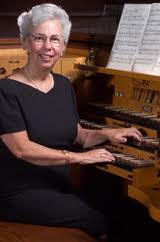 Student of Jean Langlais, Ann Labounsky teaches at Duquesne University in Pittsburgh, Pennsylvania.
Student of Jean Langlais, Ann Labounsky teaches at Duquesne University in Pittsburgh, Pennsylvania.
Jean Langlais
Website:
http://www.jeanlanglais.com
You can hear him on Spotify.
Jean Langlais (1907 – 1991) was sent to the Paris National Institute for the Young Blind in 1918 where he studied piano, violon, harmony and organ with great blind teachers including Albert Mahaut and Andre Marchal.
Later, he entered the Paris National Conservatory of Music in the organ class of Marcel Dupré, obtaining a First Prize in 1930. In 1931, he received the “Grand Prix d’Execution et Improvisation des Amis de l’Orgue”, after having studied improvisation with Charles Tournemire. He ended his studies with a Composition Prize in the class of Paul Dukas at the Paris Conservatory in 1934.
In 1945, he became the successor to Cesar Franck and Charles Tournemire at the prestigious organ tribune of Sainte-Clotilde in Paris. He left that position in 1987 at the age of 80, having been titular for 42 years. Professor for forty years at the National Institute for the Young Blind, he also taught at the Paris Schola Cantorum where, between 1961 and 1976, he influenced both French and foreign students, including Naji Hakim and Ann Labounsky amongst many others.
Biographies:
Jean Langlais – The Man and His Music
by Ann Labounsky, Amadeus Press, 2000.
Jean Langlais, 1907-1991: Ombre et lumiere
(in French) by Marie-Louise Jaquet-Langlais, Paris: Éditions Combre, 1995.
Recordings:
Jean Langlais Improvises at Great Organs
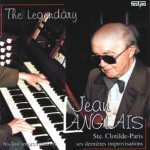
The Legendary Jean Langlais
His last recorded improvisations at Ste. Clotilde.
Naji Hakim
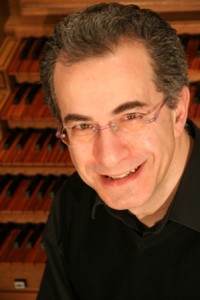 Official website:
Official website:
http://www.najihakim.com/You can hear him on Spotify.
Naji Hakim studied with Jean Langlais and at the Conservatoire National Supérieur de Musique de Paris in the classes of R. Boutry, Jean-Claude Henry, M. Bitsch, Rolande Falcinelli, J. Castérède and S. Nigg, where he was awarded seven first prizes. He is professor of musical analysis at the Conservatoire National de Région de Boulogne-Billancourt, and visiting professor at the Royal Academy of Music, London. At first organist of the Basilique du Sacré-Coeur, Paris from 1985 until 1993, he then became organist of l’église de la Trinité, in succession to Olivier Messiaen, from 1993 until 2008.
Book:
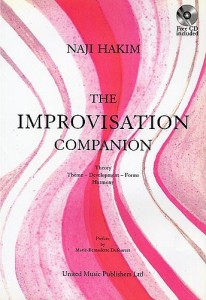 The Improvisation Companion
The Improvisation Companion
United Music Publishers Ltd.
The Improvisation Companion is intended as a reference book for all musicians looking for a form of personal artistic expression on their instrument. The guide uses an educational process of synthesis and is divided into four main parts that deal with the theory of improvisation and of its different components (theme, development and forms). The two appendices cover the basic principles of harmonisation and give a repertoire of themes.
Articles:
Principles of Improvisation. In: Church Music Quarterly, magazine of the Royal School of Church Music, July 2001.
Une entrevue avec Naji Hakim
by Béatrice Piertot in : “La Revue l’Orgue” 2003 (in French)
Audio:
Naji Hakim – Entry in the 33rd Haarlem Improvisation Competition
Videos:
Documentary – On the Edge featuring a Sortie by Hakim
Naji Hakim – Improvisation “Segne du Maria” – Wallfahrtskirche – Klausen
On the music of Hakim:
Selected Chant-Based Organ Works of Naji Hakim: The Influence of Improvisation
by Heather Hernandez






